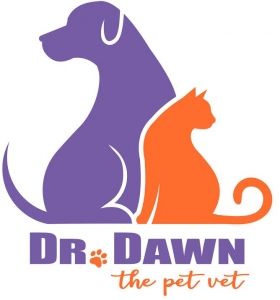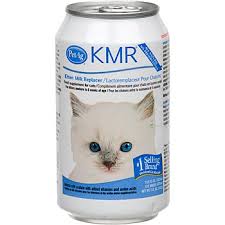Many of you may have come upon motherless, very young kittens. It is not uncommon, and if you are faced with the desire to nurse them until you can find a home, it is often difficult to know just what do to. Here are 6 tips to help guide you.
1. Determine whether they are actually abandoned
It is often difficult to determine if kittens are truly abandoned, or just left for a while until mom returns. Often the mother is simply off hunting or may even be in the process of moving the kittens from one location to another. Yet, there is no way to guarantee for sure whether they have been abandoned other than keeping watch for her return. Best to do this from a distance, as your presence may prevent her from coming back. It may be better to leave and come back in an hour or two, as long as the kittens are not in imminent danger. If they are warm, clean, plump and sleeping quietly, they are less likely to be abandoned or orphaned. If they are thin, cold, dirty or crying, they may be in trouble.
If you determine that they are not abandoned and have touched them, don’t worry. The mom will not reject them, as many believe. However, your scent on her family might lead her to move them to a new, more secluded location.
2. Keep them warm, but not too hot.
Young kittens’ body temperature is lower than that of adult cats. In nature, they have their mother and littermates to keep them warm. Without support, their body temperature can become even lower, which can result in decreased organ function, making them at increased risk of infection, and even death.
How to keep them warm: a heating pad placed on the low setting, hot water bottles (changing the water frequently to keep it warm), a heat lamp and fleece-based bedding (washed frequently to keep it clean). Incubators are ideal, so great if you happen to have one. You can create an at-home simulated incubator with a large box, blankets, towels or other bedding, and put the hot water bottles in it. The kittens should have enough room to move away from the heat source to avoid overheating. Place a thermometer in teh area to monitor the temperature. Ideally, the humidity of the area should be 55-69 %.
Ideal Kitten environment temperature
AGE Temperature
less than 1 week 85-90 degrees F
1-2 weeks 80-85 degrees
2-3 weeks 75-80 degrees
3 weeks and older 70-75 degrees
Kittens are very susceptible to hypothermia during the first few weeks of life, so striving for the above temperatures to be constant should be your goal. Avoid direct contact with heat sources to reduce the risk of burning them.
3. How to tell how old they are:
Certain life stages will give you hints as to the age of the kittens.
Age Changes to expect
7-10 days Eyes and ear canals open
1-2 weeks Begin to crawl
2 weeks First teeth (incisors) appear.
2-3 weeks Begin walking fairly well
3 weeks Kittens who might sleep 90% of the time prior become noticeably more active.
3-4 weeks canine teeth appear
4-6 weeks functional hearing develops
5-6 weeks larger premolar teeth appear
Hungry, underfed kittens will usually make it obvious, by crying. You can pick up small, kitten size bottles at your vet, or a pet supply store. I recommend feeding KMR (kitten milk replacer) formula, available in cans. Feed them until they are satisfied, and feed again when they start crying, much like a human baby. That usually is every few hours. Bigger kittens can be fed a mixture of kitten food and KMR using a syringe. Bigger kittens might eat 15-25 mls per feeding.
 Weight them weekly, to verify that they are growing steadily and appropriately. ONce you have made i tto the 3-4 week age milestone, you can begin introducing the solid food. Start with thin consistency foods, such as baby food, mixed with kitten formula. Gradually move up to dry food, softened with formula, and canned food. Providing appropriate nutrition usually is the biggest challenge when fostering these kittens. Make sure you have the appropriate bottle, to avoid aspiration. Diarrhea is a sign that the diet is either in excess or not ready to be digested. Your goal is also to avoid dehydration. Still, the infant mortality rate is high (as much as 50%), so be prepared for this when you take this task on.
Weight them weekly, to verify that they are growing steadily and appropriately. ONce you have made i tto the 3-4 week age milestone, you can begin introducing the solid food. Start with thin consistency foods, such as baby food, mixed with kitten formula. Gradually move up to dry food, softened with formula, and canned food. Providing appropriate nutrition usually is the biggest challenge when fostering these kittens. Make sure you have the appropriate bottle, to avoid aspiration. Diarrhea is a sign that the diet is either in excess or not ready to be digested. Your goal is also to avoid dehydration. Still, the infant mortality rate is high (as much as 50%), so be prepared for this when you take this task on.
5. Help them eliminate and keep them clean
One of the mother’s duties is to stimulate elimination in the kittens. To mimic this, first moisten a cotton ball with warm water. Then massage the abdomen of the kitten at each feeding. ALso, gently wipe the urinary and anal openings, then dry off the kittens after they urinate and defecate. Good hygiene is key when handling them. Use a damp cloth a few times a week to give them a light bath.
Look for good homes by advertising, either by word of mouth, or distributing pictures of the cute kittens at your vet, supermarkets, etc. Typically it is best to have them examined at your vet, and possibly vaccinated once prior to adoption.
Dr. Dawn
Please share and subscribe here





